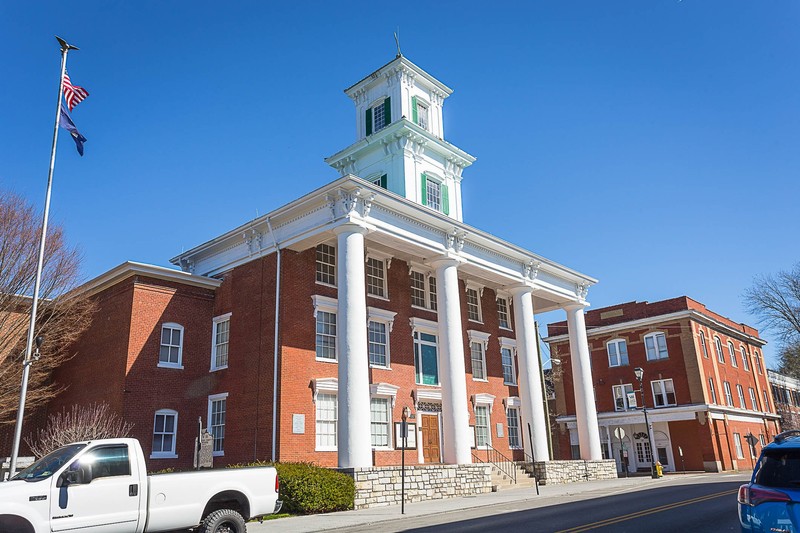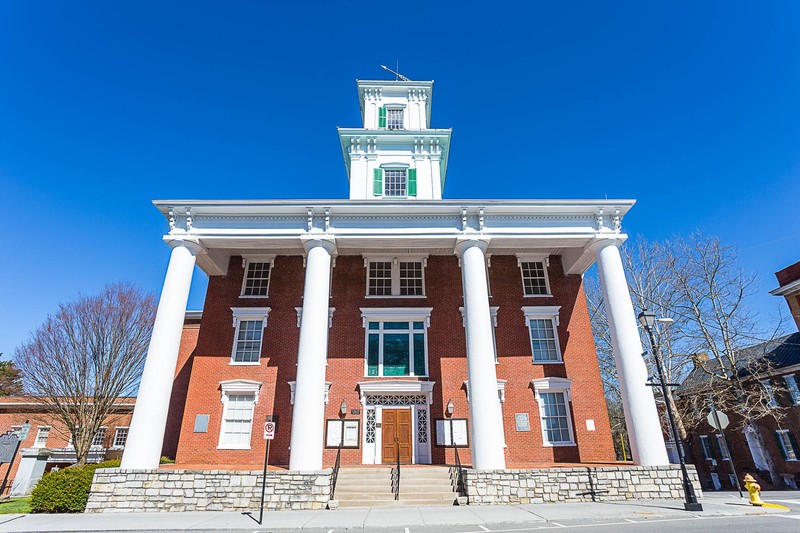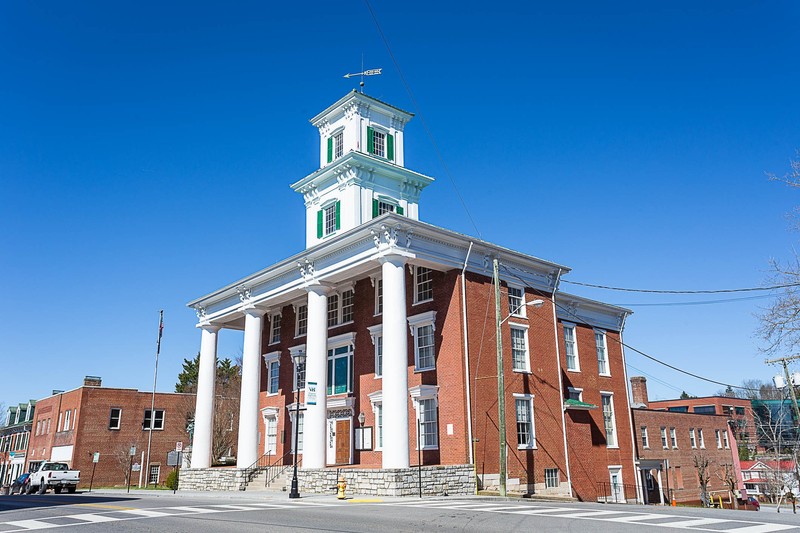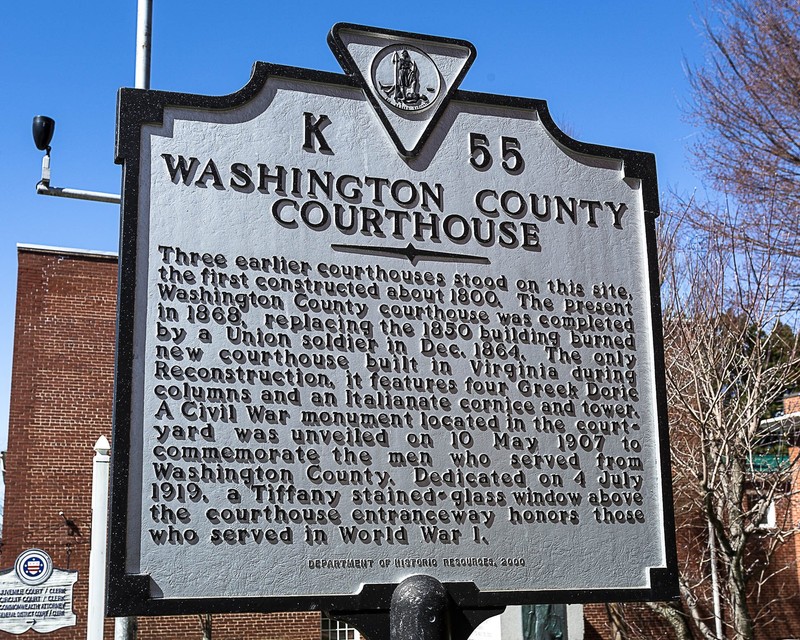Washington County Courthouse
Introduction
Text-to-speech Audio
Images
Washington County Courthouse facade

Washington County Courthouse facade

Washington County Courthouse facade


Washington County Courthouse historical marker

Historical marker discussing the burning of the Washington County Courthouse during the Civil War. (Located at the Fields Penn House).

Backstory and Context
Text-to-speech Audio
The Washington County Courthouse stands as one of the major focal points for the Town of Abingdon and Washington County alike. Completed in 1868, the three-storied courthouse is designed in a combination of Greek Revival and Italianate styles, a common architectural stylization of the early Postbellum South. The defining features of this building is its imposing full-height portico with Doric columns and the two-tiered cupola placed on the roof. Situated smartly at the crest of a steep hill known as Courthouse Hill, the current courthouse is the third to occupy that particular spot – the first being a log structure dating back to 1800 and the second being a brick Greek Revival style building constructed in 1850.
Washington County’s courthouse is very particular to Virginia as it was the only courthouse erected in the state during the Reconstruction Era. The second courthouse famously burned to the ground by a vengeful former resident during Stoneman’s Raid in 1864. The story goes that as General Stoneman marched his men north from Bristol towards Saltville and Austinville on December 14, 1864, they stopped in Abingdon for the usual destruction of public property and pillaging of private. However, one of Stoneman’s men remained behind to cause more damage. Union Captain James B. Wyatt with Company M of the 13thTennessee Cavalry grew up in Abingdon and had several encounters with the local law enforcement as a youth. Apparently, Wyatt continued to hold a grudge against one of the judges in Washington County, and saw his opportunity to get revenge. On that night, Wyatt deliberately set fire to the courthouse. The fire quickly consumed not only the courthouse but the neighboring homes as well. Wyatt remained on site to observe his fire, which afforded time for the Confederate cavalry troops in town to catch up with him at Courthouse Hill. A chase ensued which resulted in the death of Wyatt during a shootout.
Today, the courthouse is the seat of the 28thJudicial District Court of Virginia.Sources
Abingdon in the Civil War. Historical Marker Project. August 31, 2014. February 1, 2019. https://www.historicalmarkerproject.com/markers/HM19T9_abingdon-in-the-civil-war_Abingdon-VA.html.
Virginia Historic Landmarks Commission. Abingdon Historic District. Virginia Department of Historic Resources. February 26, 1970. February 1, 2019. https://www.dhr.Virginia.gov/VLR_to_transfer/PDFNoms/140-0037_Abingdon_Historic_District_1970_Final_Nomination.pdf.
Thomason and Associates. Architectural Survey Report: Abingdon, Virginia. Virginia Department of Historic Resources. December 1998. February 1, 2019. https://www.dhr.Virginia.gov/pdf_files/SpecialCollections/WG-060_AH_Survey_Abingdon_1998_THOM_report.pdf.
